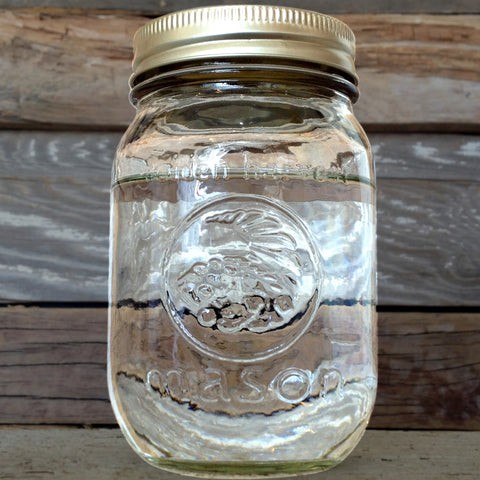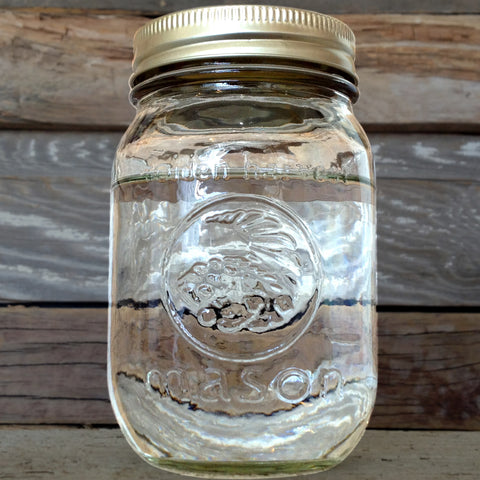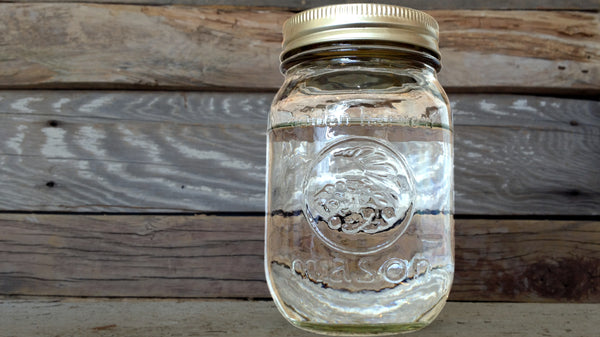Moonshine, often dubbed “white lightning,” is a high-proof spirit traditionally made from cereal grains like corn, barley, and rye. It’s a type of unaged whiskey, clear in appearance due to the absence of barrel aging. While its popularity surged during the Prohibition era, it has since gained recognition as a commercially produced product.
Understanding Moonshine and the Law
Is distilling moonshine at home legal? The answer is generally no. Distilling alcohol for personal consumption without the necessary permits is illegal in many places. This article is intended for educational purposes only and should not be taken as encouragement to engage in illegal activities. Instead, consider exploring the legal aspects of distilling and perhaps pursuing proper licensing if you’re truly passionate about the craft.
Essential Equipment for Making Moonshine
Historically, moonshiners relied on rudimentary equipment, sometimes with hazardous materials. Modern distilling equipment is far more advanced and safe, typically made from food-grade stainless steel (304 stainless) or high-purity copper (C-110, 99.99% copper). Below is a list of the core distilling equipment needed.
Mashing Equipment
- Brewing System: A specialized system for cooking grains and converting starches into sugars. Standard kitchen equipment may not be adequate due to the large volumes involved. Explore different types of mash brewing systems for your needs.
- Mash Paddle: Used to stir the grain mixture, ensuring even distribution and preventing clumps. Consider a stainless steel mash paddle.
- Brewing Hydrometer: Measures the sugar content of the mash and the alcohol content after fermentation.
Fermentation Equipment
- Fermentation Bucket: A container with a tight-fitting lid and an airlock to facilitate fermentation. Browse various fermentation kits.
- Bucket Opener: A helpful tool for easily removing tight-fitting lids from fermentation buckets.
Distillation Equipment
- Distiller: A high-quality still made from copper or stainless steel, free of leaded solder. A crucial element is the moonshine stills.
- Heat Source: A digital electric controller is recommended for precise temperature control. You can view available still heat controllers.
- Distilling Hydrometer: Measures the alcohol content (proof) of the distillate as it exits the still.
- Proofing Parrot: Simplifies the use of a distilling hydrometer.
For more detailed information, research on the differences between copper vs. stainless steel stills.
Moonshine Recipes: A Glimpse into the Process
Here are some popular moonshine recipes that moonshiners might consider.
Traditional Moonshine Recipe
This recipe is the standard for American moonshine, an all-grain, corn-based mash closely resembles the original recipe.
This procedure gives a sweet corn aroma and a rich flavor. The barley gives body, corn is the predominant flavor, and the rye adds some spice.
All Grain Moonshine Mash
Traditional Moonshine Ingredients
- 6.75 gallons of water
- 9lbs. flaked maize (corn)
- 2lbs. malted and crushed barley
- Yeast (distillers yeast, or even bread yeast)
- Granulated sugar (optional)
Moonshine Mash Procedure
- Heat water to 165 degrees Fahrenheit.
- Add the corn (in a nylon strainer bag or in a steel mesh basket) and cook for 20 minutes.
- Drop the temperature to 148 degrees Fahrenheit.
- Stir in the malted barley and allow to sit for 60 minutes, stirring every 10 minutes.
- Remove the grains, allowing them to drain into the kettle.
- Pasteurize by heating to at least 170F for 10 minutes (optional step).
- Cool the mash to 75 degrees Fahrenheit.
Moonshine Fermentation Process
- Transfer to a fermentation bucket, aerate, and add yeast.
- Allow to ferment for 7-10 days.
- Once fermentation is complete, move on to distilling.
“Thin Mash” Moonshine Recipe
Thin mash is part grain and part granulated sugar.
Added Sugar vs. Potential Alcohol in Mash
| Pounds of Sugar | 1 Gallon Mash | 5 Gallon Mash | 10 Gallon Mash |
|---|---|---|---|
| 1 lb. | 5.9% | 1.2% | 0.6% |
| 2 lbs. | 11.9% | 2.3% | 1.2% |
| 3 lbs. | 17.7% | 3.6% | 1.8% |
| 3.5 lbs. | 20.5% | 4.1% | 2.1% |
| 4 lbs. | x | 4.8% | 2.3% |
| 5 lbs. | x | 5.9% | 3.0% |
| 6 lbs. | x | 7.1% | 3.6% |
| 7 lbs. | x | 8.3% | 4.1% |
| 8 lbs. | x | 9.5% | 4.8% |
| 9 lbs. | x | 10.7% | 5.4% |
The more sugar that is added to a mash, the higher the potential for alcohol creation. You can read more information on increasing the proof of moonshine.
Sugar Mash
Sugar mash is high proof alcohol made with only granulated sugar and zero grain.
Honey Whiskey Recipe
Ingredients:
- 1 gallon of wildflower honey or honey of choice
- 5 gallons of water
- Super Start distillers yeast or yeast of choice
- Yeast nutrient
Procedure:
- Heat 2.5 gallons of water to 160° F and stir in 1 gallon of honey until completely dissolved.
- Add an additional 2.5 gallons of room temperature water to the honey solution.
- Cool to 70F using an immersion chiller.
- Aerate by pouring mash back and forth between two buckets.
- Add yeast of choice.
- Add 2.5 teaspoons of yeast nutrient (Follow the directions on the label)
- Transfer to a glass carboy, install air lock, and allow to ferment around 70 F for at least 2 weeks or until it is finished fermenting. Check out ‘How to Know when Fermentation is Finished’ for information on fermentation.
- After fermentation is finished allow to settle for 10-14 days.
- Siphon (do not pour) into a 5 or 10 gallon copper still.
- Distill the fermented product.
Distilling Moonshine: A Process Overview
Distilling alcohol requires proper licensing and permits. This information is provided for educational purposes and should not be used as a basis for illegal activity.
What is Distilling?
Distilling involves heating a mixture of water and alcohol to 174 degrees or higher, causing the alcohol to boil and separate from the water.
Distillation Safety
- Ensure that the liquid completely covers the heating element at all times
- Secure chilled water supply and drain hoses to condenser before heating still
- Properly ventilate the distillation area at all times
- Ensure there is no vapor leaking from the still for every run
- Ensure that the still is not completely sealed for every use
- Always ensure that distillate is not hot, (slightly warm is acceptable)
- Collect distillate in a sturdy container away from the heat source
Distillation Steps
Here are the steps that one would take to distill moonshine:
Filling the Still
- Measure the final gravity of the wash and write it down
- Fill the still with the wash (it’s better to siphon than to pour)
Moonshine Stripping Run
A stripping run is a “quick and dirty” distillation that serves to only slightly concentrate the alcohol from the wash. A final distillation run, called a spirit run, will increase proof further. The steps for creating a stripping run are as follows:
- Install the condenser and turn on the cool water supply
- Heat the wash to 174 F or higher
- Discard the first 100ml of distillate, it could contain methanol
- Collect the rest of distillate in a sturdy container
- Keep collecting until the distillate being produced is 5-10% ABV or less
- Empty and rinse still
Note, If a spirit run will be completed, 2 more stripping runs with the fresh, undistilled wash will be necessary to fill the spirit run still.
Moonshine Spirit Run
- Add liquid from all three stripping runs to the still
- Install the condenser and turn on cooling water
- Heat the liquid to at least 174F
- Discard at least the first 50 milliliters, as this could contain methanol
- Begin collecting spirits in pint sized containers to make cuts, explained below.
Making Distillation Cuts
Commercial distillers use this process to improve the flavor and aroma of their spirits by separating different parts of a distillation “run” into separate containers and blending only the best parts, called the hearts.
Foreshots
The first 10% or so of distillate needs to be thrown away, as it could contain methanol and might be poisonous.
Heads
The second part of the run contain compounds such as acetone, acetaldehyde, and acetate.
Hearts
The hearts contain ethanol and other desirable compounds.
Tails
The richness of the middle part of the run will fade into what are called the tails. This section of the run has a dull, watery taste.
Again, distilling alcohol is illegal without a federal fuel alcohol or distilled spirits plant permit as well as relevant state and local permits.



